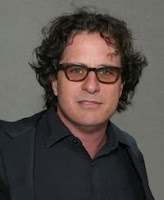 |
| (Source: http://www.tehana.co.nz/Images/About-Us.png) |
“Me he mea e ki mai koe e aha te mea nui o tenei ao Maku e ki atu e tangata, e tangata, e tangata”
“If you were to ask me what is the most important thing in the world I would have to answer it is people, it is people, it is people.”
This Maori proverb is what resonates in the small community of Te Hana. A small rural area located at the Northern fringe of the new Auckland Super City.
 |
| (Class photo outside Te Hana Marai taken by Hannah Good) |
A week ago, as part of our planning course, our class had a privilege of being welcomed for a three day stay at the new Marai of the Te Hana Community. There, we experienced firsthand and gained understanding of Maori customs and traditions. More importantly we learned and gained insights about their history and their vision for their people. With that, I hope to share with you what I have taken from this experience and to walk you through this journey of the a dawning.
Words to describe my experience in Te Hana:
unforgettable. unique. memorable. truly inspiring. eyeopening.
 |
| (Words I associate with Te Hana, using Wordle) |
 |
| (My fingerpainting reflection of my experience in Te Hana) |
This fingerpainting reflection describes how I felt from the start to the end of the trip. The blue strokes reflect my not so warm feeling before of the trip -being an “outsider”. But eventually through meeting the people from Te Hana and listening and interacting with them along with my classmates, there’s sudden rush of warm feeling. The yellow shows this. Also, it suggests the hope and vision they have for the community. The red symbolizes their passion, love and commitment, while the swirls and dots represents the relationship that is being built.
What struck me the most is their heart for people across generations - of the past, present and future. Their community spirit to do good for their people is just amazing. A true love in action, through faith accompanied by deeds.
_________________________________________________________________________________
The community's dream and vision for Te Hana "…to be a beautiful, culturally and socially vibrant place of opportunity with all people working together cooperatively to achieve the shared vision” is now unfolding.
 |
| (Source: https://secure.zeald.com/site/terranova/images/Project_Photos/Te_Hana_Cultural_Centre_1.jpg) |
From a community that was in crises and under threat of being closed down, comes a story of love, commitment and sacrifice of its people. Its people who had nothing but a dream. A dream that became the seed in which their hope and aspirations to see their community flourish founded the Te Hana Community Charitable Trust. With a group of Trustees and Taumata Council of Elders, a seed of hope has been sown in which they are continuously working hard, investing for the future of their children with passion and compassion.
The story of Te Hana is one of resilience and tenacity. Despite the roadblocks they faced -the plethora of planning policies, rules and instruments that caused impediment to their community development, Te Hana and its people knew there is a way to climb the hurdles, there must be a way to address the issues they're facing and see change.
This mindset that started from a dream -a seed, grew into what is now taking place, the development of a 17th century Maori Village. The Te Hana Trust seek for this development to be recognised as the new and vibrant Northern Gateway where it can provide education and meaningful economic opportunities to combat high unemployment and social problems.
However the journey is not free of obstacles. As I have said, their story one of resilience and tenacity. With the recent Auckland reforms, one of the challenges faced by the Trust is focused on getting Te Hana on the Auckland Plan, so that their vision will be funded and supported by the new Council to continue on with the implementation of their goals for the community.
These goals as outlined in the Te Hana Community Outcome Plan are:
Infrastructure - securing the basic physical necessities required by the people
Social goals - where community trust and safe environment is present
Economic development -providing meaningful employment opportunities within the local community
Cultural vitality
Kaitiakitanga / guardianship of natural and built environment
With these community goals, Te Hana offers only benefits to the Auckland region. It offers a chance for the city to put resources into something that will be symbolic and catalytic for creating liveable places that fosters sustainable development.
This experience and the Te Hana community is something that will remain in me and will always be remembered, be it in my future planning career and wherever God may lead me to.
I'd like to say huge thanks to Te Hana for sharing their story and sowing those seeds of hope -highlighting the importance of having a vision and genuine love for people.
Lastly to end this post, I'd like to conclude with a karakia (a Maori tradition of starting and ending their day with a prayer, as we've experienced in our stay over at the Te Hana Marai)
Dear Lord Jesus, thank You for what You are doing in the community of Te Hana. I pray for Your blessing to richly pour upon this community. May You give the leaders and stewards of Te Hana wisdom and strength to continue on with their vision though Your Holy Spirit. And may You use them mightily to help others in the community who may be going through what they have gone through, so that they may be Your light in this city. Amen.





















